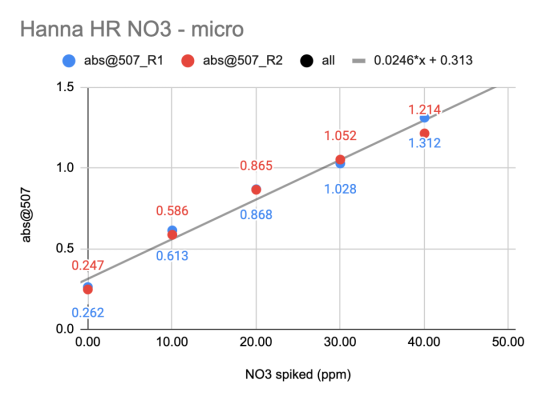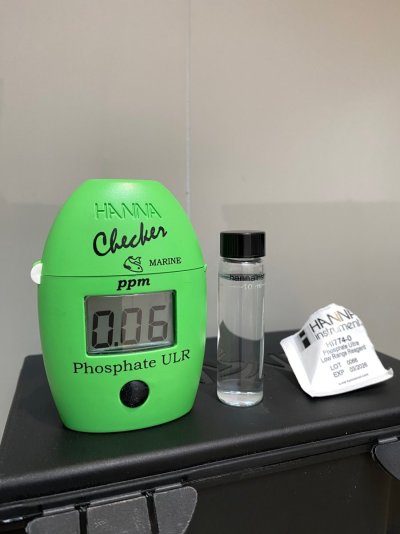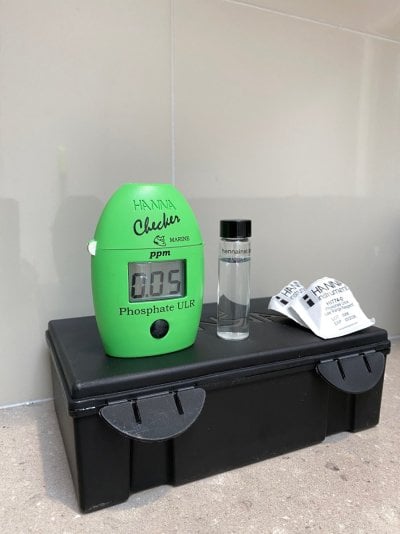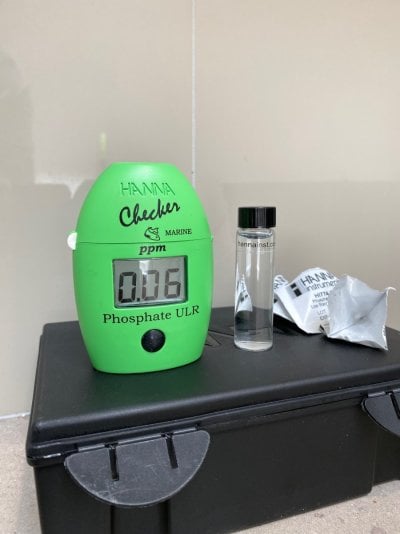- Joined
- Sep 21, 2018
- Messages
- 7,571
- Reaction score
- 7,962
Have you strung the growth pictures together in a video for time lapse view? That would be awesome!I like to track my growth and color with pics at least every other week lol.
Follow along with the video below to see how to install our site as a web app on your home screen.
Note: This feature may not be available in some browsers.
Have you strung the growth pictures together in a video for time lapse view? That would be awesome!I like to track my growth and color with pics at least every other week lol.
I haven’t but I did post my short cake in one of the photo contest.. I’d have to figure out how to make a video lol. It was a time lapse thingy.Have you strung the growth pictures together in a video for time lapse view? That would be awesome!
@Dan_P mentioned how he checked shorting some PO4 reagent.Thank you for your very detailed response! This thread was started because I noticed Reefers consistently saying that their (other brand) test kit is off because the Hanna Checker reads differently. Have you, @taricha, or @Dan_P done an experiment to test how much you can vary the shake time, reagent amount, or water sample amount of Hanna Checkers and still get readings consistent with their margin of error? (In other words, mess it up on purpose.) There are some that believe that every reagent granule, ml, and second are critical for accurate testing with them.
TABLE 1The reference in Method 4 to the Auto-Shaker can be seen in the link below. I have been using this shaker for quite a while now and it does a good job…a bit noisy but very helpful. https://www.youtube.com/watch?v=sBlGgNaLMq8

CHART 1


So I performed the experiment with some photos.
I took about 100ml of tank water and performed a Phosphate test on 3 samples using a Hanna HI774 ULR Phosphate checker.
The test procedure was conducted exactly as instructed by the user manual.
The three sample sizes were 9ml, 10ml, and 11ml using a calibrated micropipette.
Sample Result
9ml 0.05ppm
10ml 0.06ppm
11ml 0.06ppm
So I think it is pretty safe to say that in the range where most folks like to keep their Phosphate level a variation of +/- 10% in the size of the sample has no material effect on the result.
All results were within the stated uncertainty of the instrument.
I did not performs any tests that would identify any non linearity at higher levels of phosphate.
I think it's proven unnecessary to be any more accurate than to simply fill the cuvette to the marked line.

10ml sample

9ml sample

11ml Sample


Thank you very much for that! With the exception of the calcium test, it seems to me that some Reefers overthink the use of some Hanna Checkers and what is actually required to get a good test result from them.@Dan_P mentioned how he checked shorting some PO4 reagent.
Rick tested under-shaking nitrate tests (hanna and Red Sea)
I did a check of reagent amounts with NO3. I found that I could pour the NO3 packet into two piles that looked the same to the eyeball (scale says the piles were within 10%) and the results would be essentially identical with each pile.....

I also went lower using a salifert 0.05mL spoon of NO3 reagent, so I could split a packet into 4, but the variation gets larger, and the process is fiddly and messy. not worth it for me.

And here's where @gbroadbridge tried over/undershooting the sample volume purposely.
The overall picture is that these hanna tests (the most popular ones - NO3 and PO4) seem resilient to these sorts of small technique errors.
Some hanna tests, like Ca can be really unforgiving of errors.
Thank you very much for that! With the exception of the calcium test, it seems to me that some Reefers overthink the use of some Hanna Checkers and what is actually required to get a good test result from them.
Thought of one more thing we put a great amount of time into that highlights the usefulness and reliability of the Checker photometer. We used the Checkers to measure the color intensity for many different hobby kits. We also studied turbidity and I think we dabbled with measuring chlorophyll extracts. Potentially irrelevant to the current topic but always good to point out that the photometers are serious analytical devices, with limits of course.@Dan_P mentioned how he checked shorting some PO4 reagent.
Rick tested under-shaking nitrate tests (hanna and Red Sea)
I did a check of reagent amounts with NO3. I found that I could pour the NO3 packet into two piles that looked the same to the eyeball (scale says the piles were within 10%) and the results would be essentially identical with each pile.....

I also went lower using a salifert 0.05mL spoon of NO3 reagent, so I could split a packet into 4, but the variation gets larger, and the process is fiddly and messy. not worth it for me.

And here's where @gbroadbridge tried over/undershooting the sample volume purposely.
The overall picture is that these hanna tests (the most popular ones - NO3 and PO4) seem resilient to these sorts of small technique errors.
Some hanna tests, like Ca can be really unforgiving of errors.
AI kinda works this way which makes understanding why and how it works frustrating. For human’s such inscrutable thinking is related to implicit knowledge, the stuff we know how to do but can’t explain how we do it or worse, we don’t even realize we are doing something important.I think at the end of the day hobbyist learn over time correlation between display look and feel and measurement results.
AI kinda works this way which makes understanding why and how it works frustrating. For human’s such inscrutable thinking is related to implicit knowledge, the stuff we know how to do but can’t explain how we do it or worse, we don’t even realize we are doing something important.
There is another perspective to consider. Very few aquarists put error bars on their measurement, nor perform a t-test to determine if the measurement that differs from that last one is just a result of variation, noise in the data.

